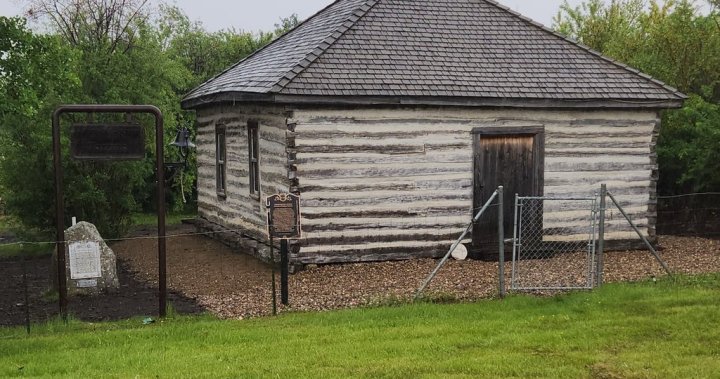Canada
‘No man’s land’: Descendants of Saskatchewan’s first Black community proud of their history

The Shiloh Baptist Church: A Symbol of Resilience and Community
Nestled in a small grove near a cemetery dotted with 37 white crosses, the one-room Shiloh Baptist Church stands as a powerful reminder of Saskatchewan’s first Black settlement. Constructed from hand-hewn poplar logs, this humble structure is more than just a place of worship—it is a testament to the courage and resilience of the Black pioneers who carved out a life in the Canadian wilderness. Today, descendants of these settlers continue to honor the legacy of their ancestors, who braved unimaginable challenges to build a new life in a land far removed from their roots in Oklahoma.
The Great Migration: A Journey to Canada
In the early 1900s, a wave of African American settlers arrived in Saskatchewan as part of the Great Migration from the United States. Lured by the promise of free land and a better life, these families left behind the oppressive conditions of the American South, where racial discrimination and segregation were rampant. Among them were the ancestors of Crystal Mayes, whose great-grandmother, Mattie, was born into slavery. Mattie and her husband, Joseph, were part of a group of Black settlers who traveled 29 kilometers north of Maidstone, Sask., to establish a new community. The land they settled on would become known as Shiloh, a name deeply rooted in biblical history and symbolizing a place of spiritual refuge and community gathering.
The Struggle to Build a New Life
The journey to Saskatchewan was not an easy one. The settlers faced numerous challenges, from the harsh Canadian winters to the back-breaking work of clearing land and establishing farms. Crystal Mayes reflects on the immense courage and determination required to adapt to such a vastly different environment. “You’re coming over to this no man’s land,” she said. “You have no idea, and people have probably never seen Black people. You’re coming from a farming background, but farming in Oklahoma isn’t like farming in Saskatchewan. Then you have to deal with the winters and make a way for yourself. It took an amazing amount of courage and determination and fortitude.”
At its peak, the Shiloh community was home to about 50 families. They were drawn by the promise of free land, which had been advertised in the United States. Mayes shared that her great-grandmother was a midwife, delivering both Black and white babies during her decades in Saskatchewan. Despite the challenges, the community thrived for a time. However, as the years passed, many families sought better opportunities elsewhere, and the once vibrant settlement gradually dwindled. Mayes noted that her family did not experience a lot of discrimination in Saskatchewan, likely due to her great-grandmother’s respected role as a midwife. However, the broader context of racism was ever-present, particularly at the federal level.
Racism and Resistance: The Federal Government’s Role
The settlement of Shiloh and other Black communities in Canada was not without its challenges. Leander Lane, author of “The Road to Shiloh” and descendant of one of the original settlers, highlights the racism that these families faced. “There was quite a lot of racism,” Lane said. “The Canadian government wanted American farmers, but they obviously didn’t want Black farmers.” In 1911, during the peak of Black migration to Canada, the federal government issued an order-in-council barring Black people from entering the country. This order, which was later repealed, deemed Black people “unsuitable to the climate and requirements” of Canada. Despite such efforts to discourage them, the settlers persevered, hacking their way through the bush to establish their farms and build their lives.
Preserving the Legacy of Shiloh
Today, the Shiloh Baptist Church stands as a testament to the resilience and determination of these early settlers. In 2018, the church received Saskatchewan heritage designation, recognizing its historical significance. However, Lane notes that many people remain unaware of the province’s Black history. “I wouldn’t say it’s been ignored. It’s just people don’t know. They don’t talk about it,” he said. Lane, who is actively involved in preserving the history of Shiloh, has encountered many individuals, even in the local area, who have never heard of the church or the Black community that once thrived there. His book, “The Road to Shiloh,” is one effort to shed light on this forgotten chapter of Canadian history.
Remembering the Past, Building the Future
The story of Shiloh and its people is one of resilience, perseverance, and community. It is a reminder of the strength of those who came before us and the importance of preserving their legacy for future generations. As we reflect on the history of this small Saskatchewan community, we are call











